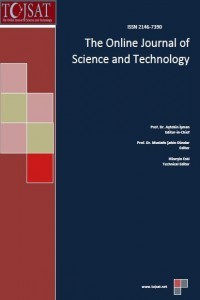Water Urbanism: A Prospective Study on Dhaka
Water Urbanism: A Prospective Study on Dhaka
Geo-morphology, Water bodies, Historical Context, Dhaka Urban FabriC,
___
- BUET (2009). Integrating the Urban Water Bodies in Dhaka’s Fabric: An Imperative Issue of Sustainable City, Workshop organized in BUET, 29 October, 2009, Dhaka. (Workshop conducted by the author).
- DAP (2007). Detailed Area Plan for Dhaka Metropolitan Development Plan (Draft Final Plan), GOB/MoH&PW/RAJUK, Sept, 2007.
- DMDP (1995). Dhaka Metropolitan Development Plan 1995-2015, GOB / RAJUK, Dhaka.
- IWM, (2003). Atlas of Urban Geology, Volume-II, Institute of Water Modelling (IWM), Dhaka
- Mowla, Q.A. (1999). Contemporary Urban Morphology of Dhaka – Lessons from the Context, Oriental Geographer, 1999: Vol.43(1), pp.52-65.
- Mowla, Q.A. (2000). Human Settlements in the Coastal Areas and the Offshore islands of Bangladesh: The Urir Char Experience, Matin, Bhuyan & Datta (Eds.) ‘Coastal Environment and Energy Resources in Bangladesh’ Published Jointly by Khulna University, UGC-Bangladesh & USIS-Bangladesh, 2000, pp.66-74.
- Mowla, Q.A.(2005). Eco-systems and Sustainable Urban Design Nexus – A Borderless Concept, in the Global IIT 2005 Alumni Conference On Beyond ii Technology, with the theme “Technology without Borders” May 20-22, 2005, Bethesda, Washington DC, USA.
- Mowla, Q.A.(2008). Eco-Sustainability of Urban Environment – the Case of Dhaka, presented in the International Continuing Education Meet on Sustainable Communities – Bridging the Gap between Research and Action, jointly organized by TKK-Finland, AIT-Thailand, UN-HABITAT and UNEP, 11-22 August 2008, AIT Bangkok.
- Mowla, Q.A.(2010). Role of Water Bodies in Dhaka for Sustainable Urban Design, Jahangirnagar Planning Review, 2010: Vol.08, pp.13-30.
- ISSN: 2146-7390
- Başlangıç: 2011
- Yayıncı: The association of science, education and technology
Optimalization of transport and logistic processes by simulation
Martin KENDRA, Jana LALİNSKá, Juraj Amaj
Study on the Requirement of Clay for Islamic Cleansing in Halal Food Industry
Puziah Hashim, Norrahimah KASSİM, Dzulkifly Mat HASHİM, Hamdan JOL
Water Urbanism: A Prospective Study on Dhaka
Study of Xanthane (KAX) Adsorption on Galena : Separation by Flotation
Potency of Aqueous White Grubs Extract Against CCl4 Induced Liver Diseases in Rats
M. S. SULE, A. J. ALHASSAN, Y. ABDULMUMUNİ
Noor ISKANADARANİ, Mansour E. Abou GAMİLA, Ali SHASH
An integrated approach to supplier selection using AHP and FUZZY PROMETHEE
Performance of Distant Education System in Turkey
Determination of corrosion rate under various corrosive environments using image analysis.
